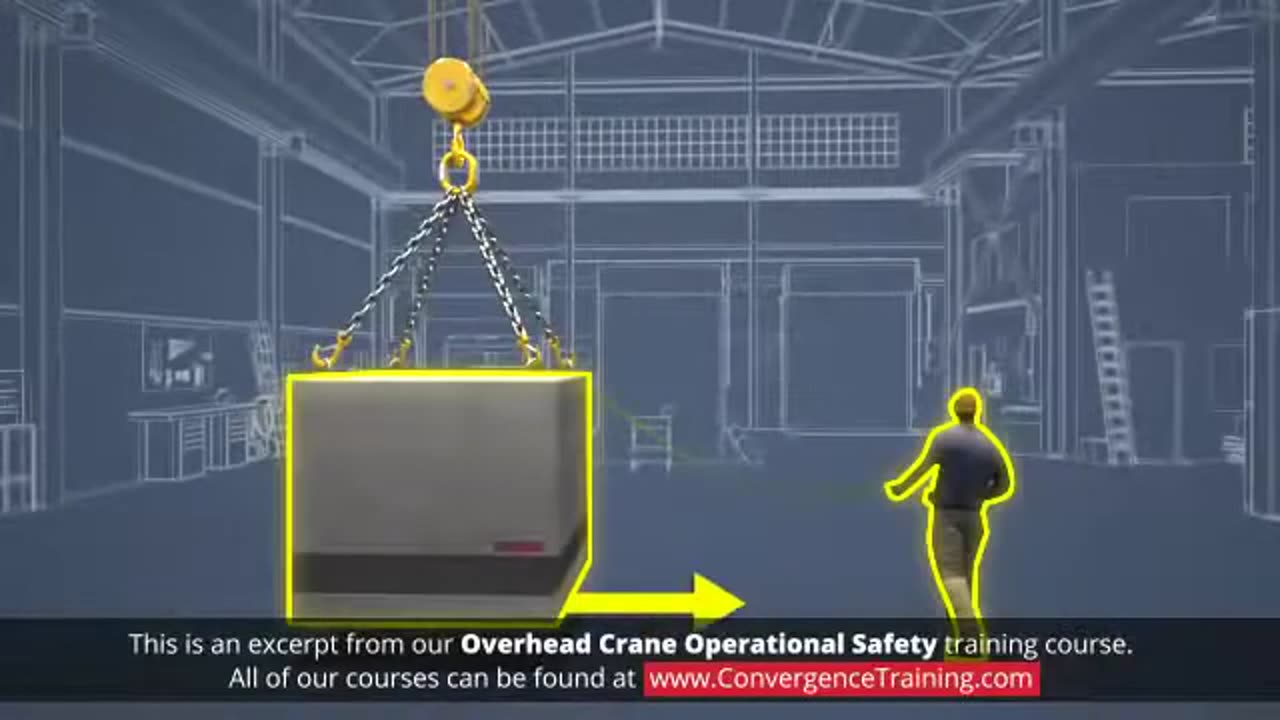Premium Only Content

Overhead Crane Operational Safety for Canada
Operating overhead cranes in Canada requires strict adherence to safety protocols as outlined in federal and provincial regulations. Here's a summary of key considerations for overhead crane operational safety:
---
### **1. Regulatory Standards**
- **Canadian Standards Association (CSA):** The CSA has specific standards for cranes, including **CSA B167-16** (Safety Standard for Overhead Cranes, Gantry Cranes, and Monorails).
- **Occupational Health and Safety (OHS):** Provincial OHS laws regulate the operation, inspection, and maintenance of overhead cranes.
- **Workplace Hazardous Materials Information System (WHMIS):** Operators must be aware of WHMIS protocols when working near hazardous materials.
---
### **2. Operator Requirements**
- **Training and Certification:**
- Operators must complete a certified crane operation training program.
- Familiarity with equipment-specific controls and load limits is essential.
- **Medical Fitness:**
- Operators should meet medical and vision standards to safely operate the crane.
- **Knowledge of Signals:**
- Operators must understand standard hand signals used for crane operation.
---
### **3. Pre-Operational Safety Checks**
- **Visual Inspection:**
- Inspect for wear and tear on cables, hooks, and structural components.
- Check for leaks, loose bolts, or mechanical issues.
- **Functionality Tests:**
- Test the brakes, emergency stop, and other controls before operation.
- **Load Limit Verification:**
- Ensure the load does not exceed the crane’s rated capacity.
---
### **4. Safe Operational Practices**
- **Load Handling:**
- Center the load directly under the crane hook.
- Avoid sudden movements like jerking or swinging.
- **Prohibited Actions:**
- Never carry loads over personnel.
- Avoid side-pulling or dragging the load.
- **Communication:**
- Maintain clear communication with the ground crew using hand signals or radios.
---
### **5. Emergency Preparedness**
- Operators must know:
- Emergency stop procedures.
- Protocols for power failure or mechanical breakdown.
---
### **6. Maintenance and Inspections**
- **Daily Inspections:**
- Conduct pre-use and post-use checks.
- **Periodic Maintenance:**
- Follow manufacturer-recommended schedules.
- Engage qualified professionals for repairs and advanced inspections.
---
### **7. Environmental Considerations**
- Avoid operations in extreme weather conditions like high winds or freezing rain unless equipment is rated for it.
---
### **8. Documentation**
- Maintain detailed records of inspections, maintenance, and operator certifications.
---
Let me know if you'd like a specific checklist or further details on any of these points!
-
 1:00:46
1:00:46
The StoneZONE with Roger Stone
5 hours agoFake News Attack on Tulsi Gabbard! | The StoneZONE w/ Roger Stone
29.6K12 -
 2:24:08
2:24:08
WeAreChange
8 hours agoElon Musk & Donald Trump: The Emergency Halt That Saved Us
64K55 -
 1:13:11
1:13:11
Flyover Conservatives
1 day agoWARNING! Is Bitcoin CIA-Controlled? – The Shocking Reality of Digital Assets - Clay Clark | FOC Show
23.8K6 -
 2:00:37
2:00:37
Space Ice
11 hours agoSpace Ice & Redeye Try To Figure Out Seagal's Most Incoherent Movie
79.3K2 -
 1:00:36
1:00:36
PMG
1 day ago $6.29 earned"Santa Trump is Giving Us Hope - But Will Johnson Stand Strong?"
71.5K12 -
 54:30
54:30
LFA TV
1 day agoThe German Strongman’s Arrival Is Imminent | Trumpet Daily 12.18.24 7PM EST
56.2K3 -
 2:04:11
2:04:11
Melonie Mac
9 hours agoGo Boom Live Ep 32! Soul Reaver Remastered!
46.4K9 -
 39:11
39:11
Sarah Westall
6 hours agoDigital Slavery and Playing with Fire: Money, Banking, and the Federal Reserve w/ Tom DiLorenzo
56.4K4 -
 1:38:38
1:38:38
2 MIKES LIVE
11 hours ago2 MIKES LIVE #157 ILLEGALS, PROTESTORS AND DRONES!
38K1 -
 1:01:03
1:01:03
LFA TV
1 day agoTHE LATEST SPENDING BILL IS AN ABOMINATION! | UNGOVERNED 12.18.24 5pm EST
40.4K47